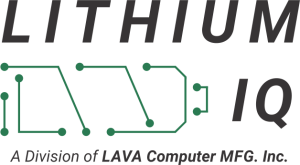
Windows 11 Readiness: Timeline, Tools & Battery Strategy
By: Leonid Shalashnyi
6 Min Read
August 14, 2025
Migrating to a new operating system is rarely just a technical task. For most businesses, it’s a disruptive moment – new workflows, possible downtime, and anxiety over change.
Migration roadmap
At Lithium-IQ, we’ve created this step-by-step Windows 11 migration roadmap with one goal in mind:
To make the transition smoother, faster, and more user-friendly for your people.
This guide is not just for IT managers or CIOs. It’s built with consideration for:
- Non-technical employees who need to know when and why changes are coming.
- Department leads who will coordinate user rollouts.
- End users who just want minimal friction, minimal downtime, and full productivity.
We’ve broken down the timeline month-by-month, covering:
- What needs to happen
- When should it happen
- How to do it without overwhelming your team
- And how to protect your investment in new devices — including ways to extend device lifespan using our Li‑IQ Casual technology.
By following this roadmap, your organization will:
- Avoid last-minute scrambles in October 2025.
- Reduce support tickets and post-migration confusion.
- Empower your staff with the right tools, training, and confidence.
- Extend the useful life of newly deployed devices — especially their batteries.
Because a smooth transition isn’t just about upgrading software — it’s about taking care of the people using it.
Here’s a revised monthly roadmap tailored for Q3–Q4 2025, broken down month by month. It includes precise timing and integrates Li‑IQ Casual organically into your migration plan.
Why This Timeline Matters
Microsoft ends Windows 10 support on October 14 , 2025: no more security, quality, or feature updates for Enterprise or Education editions. In addition, Microsoft will stop releasing new Microsoft 365/Office features on Windows 10 starting August 2026. However, security updates will continue for enterprises until October 2028. Therefore, you should complete your migration before mid‑October to avoid running unsupported systems.
Migration Roadmap: Jul – Oct 2025
July/early August 2025 (mid‑July start of Q3)
- Device Auditing: Complete inventory of all Windows 10 devices. Confirm hardware eligibility (TPM 2.0, CPU, RAM, disk) using tools like PC Health Check or Microsoft Intune reports.
- Budget & Leadership Buy-In: If not already done so, secure necessary funding by presenting the risk-driven urgency and ROI of modernizing before October 14.
- Internal Communications: Launch awareness campaign. Share timelines, benefits of Windows 11, change‑management FAQs, and pilot invitations.
August 2025
- Pilot Deployment (Early Adopters): Begin pilot group (5–10 %) via Intune / Autopilot: test image, apps, security baseline, policies. Validate your internal rollback processes.
- Application Compatibility Testing: Test LOB and critical applications in the pilot group. Flag exceptions and plan virtualization or version upgrades.
September 2025
- Phased Rollout Begins:
- Week 1–2: 10 % additional users
- Week 3: another 15 %
- Week 4: 20 %
- Continue if size supports
- Deploy feature update policies via Windows Update for Business or Intune, with optional transition windows followed by mandatory deadlines ~2–3 weeks later.
- Hardware Refresh Alignment: Deploy Windows 11 only on newly acquired or replaced hardware. Include Li‑IQ Casual dongles as a default peripheral with these fresh devices:
- Enhances battery health, optimizes power-cycle management.
- Delays battery wear and postpones hardware refresh cycles, by up to 4 years.
- Update training sessions, distribute user guides, and set up help‑desk triage.
October 2025 (by October 14)
- Final Migration Waves: Complete remaining migrations (e.g., final 30–40 %) in early October to meet EoS deadline.
- Cleanup & Validation:
- Confirm each migrated device is fully operational.
- Remove leftover Windows 10 residuals.
- Update drivers, finalize security baselines on Windows 11.
- Li‑IQ Casual Deployment Recap:
- Reinforce that any remaining eligible devices should receive a Li‑IQ Casual dongle, providing battery protection and pushing back any future device refreshes or revamps due to battery health.
- Post‑Migration Support:
- Conduct user check‑ins, feedback sessions, and support.
- Document migration lessons learned, finalize change‑management summaries.
- Establish an Evergreen IT process to maintain feature updates for Windows 11 Editions via standard servicing.
Summary Table
Monthly Key Activities
| July/August | Audit, budgeting, stakeholder communication |
| August | Pilot deployment, app compatibility, rollback validation |
| September | Phased rollout (10–20 % waves), begin Li‑IQ Casual use/deployment |
| October | Final migrations, validation, cleanup, Li‑IQ Casual final deployment, user support |
Strategic Notes & Li‑IQ Casual Integration
- Hardware Replacement Strategy: Align Windows 11 rollout with hardware refresh plans. Wherever new eligible hardware is acquired, add a Li‑IQ Casual dongle to optimize battery health and push back the next hardware refresh cycle.
- Communication & Training: Start regular user messaging in July and early August; provide pilots and help‑desk support; offer quick-start guides and champions in each department.
- Post-Migration Evergreen Planning: Once Windows 11 is fully deployed, documentation, security baselines, and servicing cadence must be maintained per Microsoft’s 36-month support cycles for Enterprise editions.
Why This Approach Works
- Keeps you compliant and secure well before October 14, 2025, minimizing the risk of unsupported Windows 10 systems.
- Provides timeline clarity and month‑by‑month accountability.
Leverages Li‑IQ Casual dongle in a meaningful way: promoting extended battery lifespan and optional protection on eligible devices, which offsets upgrade costs and pushes back hardware refresh cycles.
